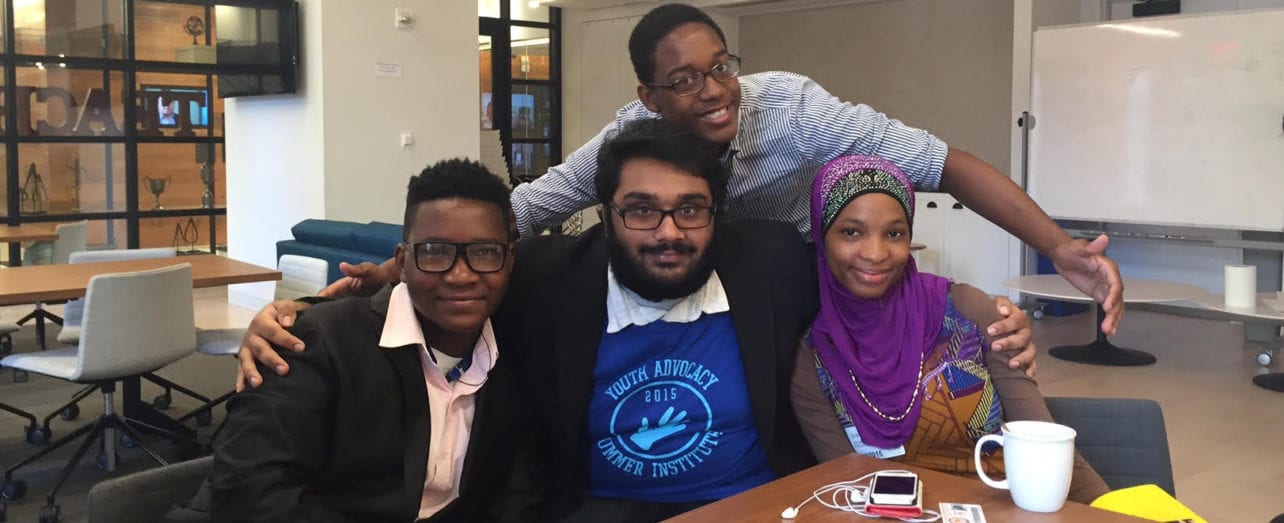East New York, Brooklyn is one of the most beautiful communities in the entire city of New York. Filled with diverse residents, enthusiastic workers and community organizations, it truly sets itself as one of the most vibrant neighborhoods in New York. It’s also a community that faces economic hardship that affects access to quality health care, education, and stable housing. Nearly a third of our residents live in poverty. A quarter of adults here have not completed high school, and nearly 60 percent of those who have don’t have a degree. These economic issues also combine with a culture of mental health stigma. When I enrolled in the Youth Advocacy Summer Institute’s (YASI) summer program in 2015, I was exposed to the cracks in mental health discussion, access, and care that I never thought of before. I was born and raised in East New York, and my growing perception of mental health led me to spearhead the Mental Health Awareness Project (MHAP), which raises consciousness of what mental illness feels like, and works to erase the stigma around mental health and improve access to care for East New York residents.
The narrow opportunities for upward mobility have impacts that are more than just economic – they create traumatic circumstances that can manifest in anxiety, depression, and even posttraumatic stress disorder (PTSD). When these health issues occur in communities with limited resources for mental health education, residents may turn to destructive behaviors to cope. Before I joined YASI, my perception of mental illness was limited to images of people who needed immediate institutional psychiatric care. It never occurred to me that my neighbor, who chain smoked cigarettes to cope with the stress of work, was self-medicating for mental stability. I learned how to view drug and alcohol misuse as more than just dangers to the body; they also indicate mental health struggles. When I looked at mental health outside of a clinical perspective, I began to see the repercussions of poor mental health all over my community. The Mental Health Awareness Project works to close the education gap by introducing young adults from low income communities including East New York to serve as Mental Health Peer Advocates. On a grassroots level, the Peer Advocates are provided an opportunity to become leaders and agents of change in the community, and they inform people about their own mental health concerns and work to bring awareness to the mental health needs of the community.
In addition to learning how to identify mental health challenges, I want to bring more quality mental health care to my community. For many people in East New York, Medicaid and the Affordable Care Act are the only platforms that allows residents to access doctors. The Mental Health Awareness Project is working to build community connections to mental health programs in order to raise awareness of existing mental health care opportunities and to create a pathway for my neighbors to seek the help that they need. My program is working to initiate this progress by completing community assessments that will help us map what the specific needs are and how we can appropriately address those needs. Our work in the community needs to be intentional and proactive; I don’t want the dialogue on mental health to be limited to bus advertisements and posters. I want to bring my findings to town halls and other public events. The push for mental health visibility needs to be physical.
There needs to be a greater understanding of mental health for this community. As someone who has been involved in the community, I have noticed that my concerns around mental health care access are becoming increasingly prevalent as programs like Thrive NYC are also working to improve the mental health care system in New York City. Mental health is dynamic, it involves virtually every aspect of society, thus we need to work with the local community organizations, religious institutions, schools and elected officials if we want to successfully capture then confront this issue as a whole.
— Saddiq Abdul was born and raised in Brooklyn, New York. He is a senior at Baruch College – CUNY. He hopes to help create a future filled with opportunities and equality for East New York. In Saddiq’s experience, although New York City is one of the most diverse and powerful cities in the world, outside of the city center many neighborhoods struggle with fundamental issues that may be missed by casual observers. Mental Health is one of these issues. It impacts everyone, regardless of race, ethnicity, religion, economic status. Saddiq wants to encourage conversations and action around Mental Health and tackle its distinct impacts on New Yorkers living in impoverished communities including East New York.

